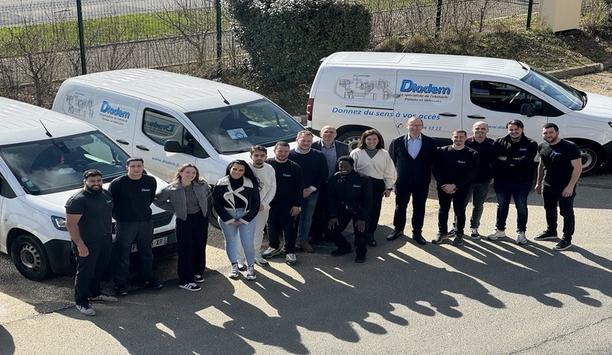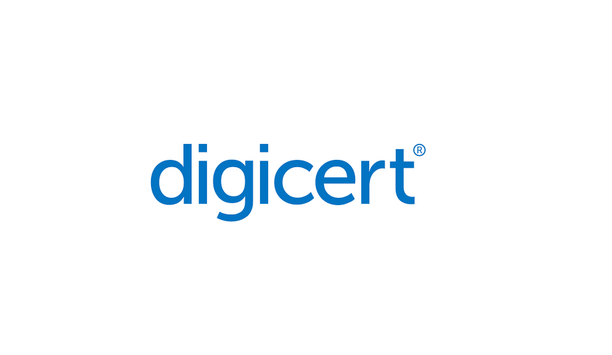Choosing new security products versus the tried-and-true
Editor Introduction
Any marketplace tends to emphasise the newest technologies and products. Confirming the trend is the perpetual rush to buy the latest iPhone. But some legacy products are so good and perform the required functions so well that users may stick with the “tried-and-true.” But does staying with yesterday’s technology suggest a missed opportunity to leverage new product features and benefits? We asked this week’s Expert Panel Roundtable: What is the security market’s appetite for “new” products versus “tried-and-true” products?
We have seen many new, innovative solutions for security technologies of late, but there is still plenty of market demand for “tried-and-true” products. Especially in the physical security realm, many long-term customers are reliant on mainstay security solutions, while concurrently exploring new use cases to leverage those existing technologies. For example, video surveillance is often used for general purpose perimeter security, but when layered with video analytics or integrated with third-party systems such as access control, these solutions can be utilised as proactive tools without replacing existing systems. As new technology is brought to market, the newest solutions may not always be the most realistic for specific use cases. While the security industry is evolving and traditional use cases for security technology increasingly exceed security uses, decision-makers should focus on comprehensive strategies which include trusted security products, while exploring new solutions to mitigate risks and improve business operations.
The rapid pace of innovation in the security industry underscores an undeniable appetite for constant improvement. The desire to remain with legacy systems continues to decline as the pursuit of enhanced features and heightened cybersecurity increases. New products, which include the evolution of tried-and-true solutions, provide the ability to meet these demands. When selecting security systems, it is important to embrace technology that is based on open architecture to avoid disruptions and being locked into a proprietary solution. By choosing solutions based on an open architecture framework, organisations can embrace innovation at their own pace and across multiple systems without having to worry about compatibility and interoperability issues.
We now live in a fast-paced interconnected world, but the appetite for innovative and higher specification security products has always been high. If a new or “tried-and-true” product can save installation time, has enhanced safety features, or is easily configured, then the reception from the installation community is usually positive. A stylish product or the ability to offer low power consumption is always well received in the market.
The security market is always evolving with newer, better, faster devices and software being introduced monthly. Better and faster versions of existing products usually see a quick uptake if the performance and accuracy benefits outweigh the costs – not just of the products themselves, but also the labour involved in deploying them. Truly new products that can be shown to improve security or solve a particular issue are usually adopted quickly as well. However, “me too” new products or new products in search of an issue to solve will face an uphill battle.
We know that familiarity with a product breeds confidence in it. Recent research we carried out across the United Kingdom, investigating transport security, revealed that there is still some education needed for industry professionals to expand their knowledge of the standards and solutions available in today’s market. As it stands, our research strongly suggests that architects and specifiers are tending to stick with what they know when specifying security solutions for new projects. Despite this, we have witnessed an increase in the uptake of security-rated acoustic barriers, which is positive as they are so versatile and work well in many environments. They offer numerous benefits including noise reduction, privacy, and security, and they are also aesthetically pleasing.
The security market’s appetite for new products is more voracious than at any time since the transition to digital video recorder technology in the late 1990s. The industry is facing a demand shock driven by post-COVID reopening and the desire for next-generation, cloud-based solutions. In particular, they are looking for solutions that leverage AI. Whether that is a point-of-sale (POS) exception reporting solution using machine learning to better identify fraud or a monitoring center using AI video technology to identify an intruder, end-users expect more value out of their security investments. Checking the box with basic video or alarm systems simply does not cut it in 2022, especially for businesses with sophisticated asset protection teams. A trusted security provider should constantly bring advances in technology to their clients. To get comfortable with a new product, any credible security company will let a business test drive the technology.
As both security threats and business operational needs evolve, security decision-makers must continuously adopt new and innovative technologies to help keep occupants safe while maintaining efficient operations. New integrated, data-powered solutions offer capabilities that allow for streamlined security operations, making them more appealing to the market than traditional siloed products. One example is artificial intelligence and machine learning, both of which provide predictive indicators of emergency events by helping to identify threats, notifying security teams, and engaging systems to better manage incidents before they occur. Another example is remote monitoring systems that enable operations teams to manage and respond to threats from anywhere, allowing modern security teams to work more efficiently without risking occupant safety. Overall, new products and broader solution options allow building managers to better customise cutting-edge systems and processes that align with their specific goals.
Editor Summary
New products today offer many more features and better connectivity, and they embrace new system capabilities such as cloud and AI. However, there are still plenty of tried-and-true products performing admirably in the field, and end-users may hesitate to disrupt a system that is running well. Convincing them of the need to upgrade or transition to newer equipment is a task for the sales department.
- Related links
- Axis Communications Access control software
- Axis Communications Digital video recorders (DVRs)
- Axis Communications Access control system accessories
- Axis Communications CCTV software
- Genetec CCTV software
- Genetec Access control software
- Salient Systems CCTV software
- Axis Communications Network video recorders (NVRs)
- Genetec Network video recorders (NVRs)
- Salient Systems Network video recorders (NVRs)
Expert commentary
Security beat
Security bytes
- Getting to know Dan Grimm, VP and General Manager of Computer Vision at RealNetworks
- Big wins and the importance of showing up: Insights from SourceSecurity.com editor Larry Anderson
- Setting goals, business travels and radioactivity: Success secrets from Tiandy's John van den Elzen
- Getting to know Jeff Burgess, President/CEO at BCDVideo
Mobile access articles
HID, a worldwide pioneer in trusted identity solutions, announces the availability of its new HID Seos Essential Bundle, providing small to mid-size businesses (SMBs) in Europe with the benefits of ad...
Smart Spaces announces that it has partnered with the trusted identity provider, HID, to make access to Workspace’s The Light Bulb building in South West London fast, simple and secure, by makin...
Global security manufacturer, Gallagher Security, has announced that support for employee badges in Apple Wallet is available for Gallagher customers in the U.S. with the release of Gallagher Command...
Barracuda Networks, Inc., a trusted partner and major provider of cloud-first security solutions, announced that Neal Bradbury has been elevated to the role of Chief Product Officer. In this new role...
Genetec Inc., a renowned technology provider of unified security, public safety, operations, and business intelligence solutions, announced that its new enterprise-grade SaaS solution, Security Center...
Gallagher Security announced the latest release of their award-winning security site management software, Command Centre v9.10, marking a significant evolution for the security platform trusted to pro...
Gunnebo Entrance Control has announced its acquisition of DG Concept and Diadem, a French entrance control, design, installation, and service specialist, marking a significant step in reinforcing its...
Global technology solutions provider - Arrow Electronics, Inc. (ARW) announced that Broadcom selected it as the sole provider for its CloudHealth from VMware offering. CloudHealth is designed to help...
In an industry-first, Safetrust provisions employee and visitor badges directly into Apple Wallet via an email link or text message, eliminating the need to download an application. This innovative a...
Compatibility with a range of credential technologies can be a critical factor when selecting access control. As organisations across the world explore a move to mobile keys for access, it is more imp...
DigiCert, a major global provider of digital trust, reconfirmed its commitment to standards and compliance with the successful completion of 31 audits within a 12-month period. These audits include a...
Interface Systems, a major managed service provider of business security, actionable insights, and purpose-built networks for multi-location businesses, announced that it is releasing an enhanced cust...
Federation of Gujarat Industries (FG)), Vadodara has conferred the Outstanding MSME Excellence Award at the 18th FGI Awards presentation ceremony. The objective behind the institution of these awards...
Geekplus, the global pioneer in mobile robot and smart logistics solutions, has deployed the first Shelf-to-Person PopPick project in the Nordics for one of the biggest online pharmacy wholesaler...
The Cygnus ALERT notification and monitoring platform is a cloud-based solution designed to strengthen site safety. Using Cygnus ALERT, construction professionals and site administrators can receiv...
Multi-residential access management and security
DownloadGuide for HAAS: New choice of SMB security system
DownloadPrecision and intelligence: LiDAR's role in modern security ecosystems
DownloadHikvision: Solar powered product introduction + HCP
DownloadGunshot detection
DownloadDahua DH-CS4010-8GT-60 10-Port Cloud Managed Desktop Switch with 8-Port PoE
Verkada TD52 Cloud-Based Video Intercom
exacqVision IP08-64T-R1XW-E X-Series 1U Rdnt IP NVR 64TB RAID5 Windows OS with 8 IP Ent Lic







































